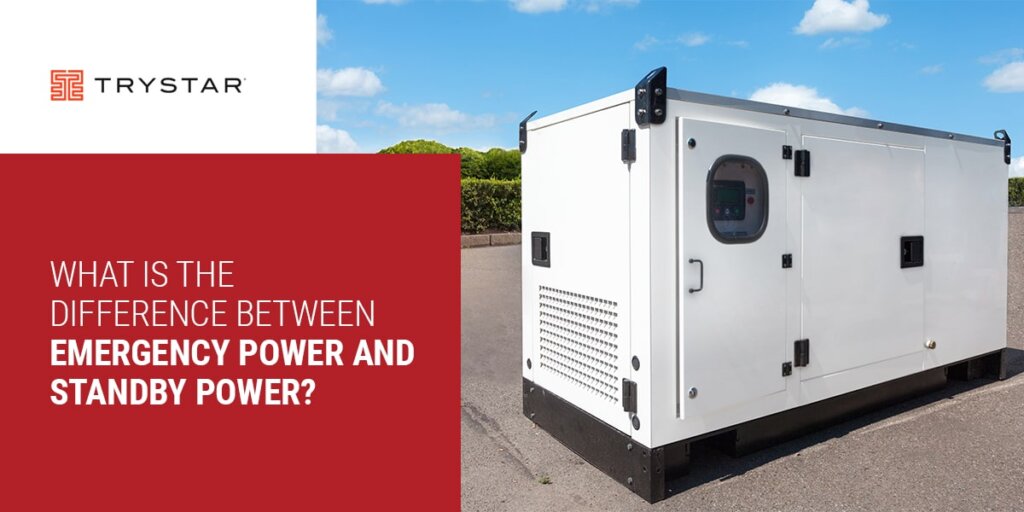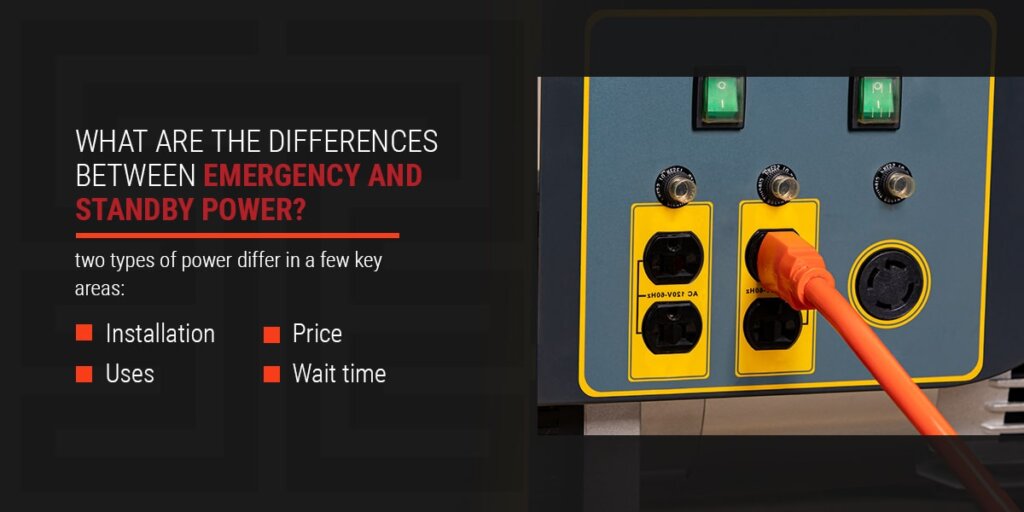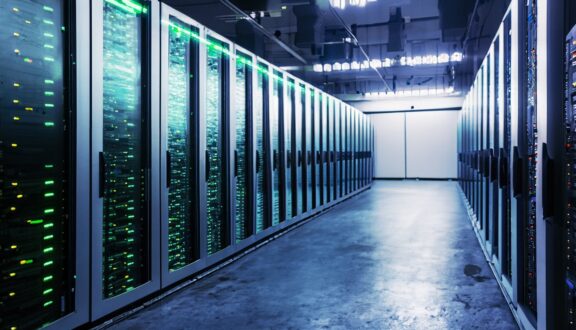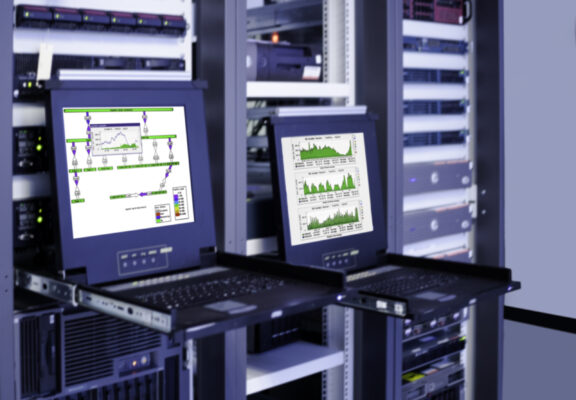Last Updated on April 12, 2023

Having a power source during outages is critical for keeping your business up and running. Emergency and standby power systems are two ways to keep power on hand. Though many people use these terms interchangeably, they have separate regulations and uses.
Choosing the right equipment starts with understanding the differences between emergency versus standby generators. Trystar is here to break down the options and help you decide which is best for your business needs.
WHAT IS EMERGENCY POWER?
An emergency power system kicks in immediately during a power outage. These systems are fast to respond to a lack of power, and they take minimal time to start up.
The National Fire Protection Association (NFPA) requires emergency power systems under the National Electric Code® article 700.3. These emergency systems must power features that are essential to keeping people safe, including:
- Emergency communications
- Smoke detectors
- Elevators
- Exhaust fans for toxic fumes
Emergency power systems must be entirely separate from the main power supply. These generators run on their own fuel supply — usually gasoline or diesel — that can be stored on-site or delivered as needed.
WHAT IS STANDBY POWER?
Standby power is another type of backup power system. It differs from emergency power in that manual activation is required. Once an emergency is declared, the building owner or person responsible must turn on the standby power system. Standby systems fall into one of two categories — legally required and optional.
LEGALLY REQUIRED STANDBY SYSTEMS
Standby power is required for equipment that could create hazards or interfere with firefighting and rescue operations. These are less critical than emergency systems, which impact human safety. Some examples include heating and refrigeration and sewage pumps.
Standby systems share some utility components, and they do not have to be separate like emergency systems.
OPTIONAL STANDBY SYSTEMS
The NFPA code does not require operational standby power. Building owners can install operational gear as needed to restore power to select equipment. Many employ operational standby equipment to keep people comfortable during an emergency outage or to prevent financial and data loss.
These systems can be manual or automatic depending on the owner’s preference. They can also share wiring and components with regular or legally required standby power.

WHAT ARE THE DIFFERENCES BETWEEN EMERGENCY AND STANDBY POWER?
Emergency and standby power are required by code to help with emergency operations during an outage. However, the two types of power differ in a few key areas:
- Installation: Emergency power must be completely separate from the main power line. Any overlap could inhibit the power during an outage. However, your standby system can share components with the main power supply and use them to detect when the utility line is down.
- Uses: Emergency power is critical to safety, while standby systems are less essential. However, standby operations could become hazardous if they are left without power. Operational systems are not vital to life in any way.
- Price: Standby and operational systems are less expensive than emergency systems since they can share features with your existing power setup. An emergency system needs separate components and fuel, increasing the cost.
- Wait time: Emergency power kicks on in 10 seconds for almost immediate power. Standby power can take up to about a minute depending on the setup and automation.
WHAT YOU SHOULD PUT ON BACKUP
Not everything in your building needs to be on a backup power system. Per NFPA codes, you must have an emergency system in place for life-saving components. These could range from respirators in medical facilities to exit lighting in large event centers. Anything that could impact someone’s life without power belongs on an emergency system.
Standby systems can power anything from ventilation and communications to building automation — these building components won’t impact anyone’s immediate safety, but they will help firefighting, rescue and evacuation processes.
Operational standby systems are up to your discretion, but there are some recommended cases. Data centers should have a standby system to prevent data and research loss. Homeowners may also opt for a backup to power their lighting, heating and air conditioning and some outlets to stay comfortable during an emergency.
Your backup will also depend on your building size. Before selecting a plan, consult with an expert in external power sources.
FIND QUALITY POWER EQUIPMENT WITH TRYSTAR
Trystar helps businesses navigate outages smoothly with backup power distribution equipment. Since 1991, we have helped countless companies with customized docking stations and portable power distribution products for any situation. We can determine what product will fit your needs and customize your gear to represent your branding.
Contact us online if you want to learn more about our solutions or request a quote to get started on an order today!
We Are Here
To Help
Our team is here to support you and solve your power challenges. Connect with our responsive experts today to learn about our customized power solutions and products.


